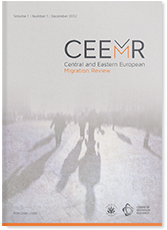Predicting a Migration Transition in Poland and its Implications for Population Ageing
Predicting a Migration Transition in Poland and its Implications for Population Ageing
Author(s): Agnieszka Fihel, Anna Janicka, Marek OkólskiSubject(s): Economy, National Economy, Socio-Economic Research
Published by: Ośrodek Badań nad Migracjami / Uniwersytet Warszawski
Keywords: population ageing; international migration; migration projection; demographic transition; migration transition; Poland
Summary/Abstract: Poland, traditionally a country of emigration, started to record a positive migration balance in recent years. However, thus far, no forecast has indicated the possibility of Poland’s transition from a net sending to a net receiving regime. This study indicates the theoretical underpinnings of such a change and provides an international migration projection. To this end, we refer to the historical experiences of other European countries, more advanced in terms of the Demographic Transition (DT), Second Demographic Transition (SDT) and Migration Transition. We develop a deterministic migration projection of four types of flow (the in- and out-migration of nationals and foreign citizens) up until 2060, combined with the United Nations’ Bayesian probabilistic models of fertility and mortality projections. The results show that Poland will evolve from having a net sending to having a net receiving status around 2030–2034. The combined effect of migration flows on population ageing will not be significant but, in the long run, when considered separately, the four types of flow will have non-negligible, though opposite, effects: the outflows will contribute to population rejuvenation, while the inflows will accelerate population ageing.
Journal: Central and Eastern European Migration Review
- Issue Year: 12/2023
- Issue No: 1
- Page Range: 265-292
- Page Count: 28
- Language: English

